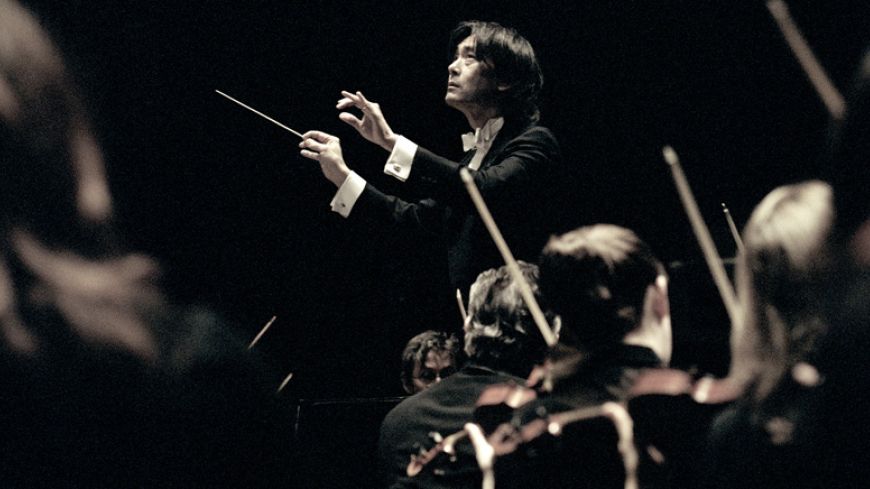
For a Canadian orchestra lauded as one of the best French orchestras in the world, it seems a little odd that an International Festival concert should not have any French or Canadian content.
The second, final, night opened with a fairly short Takemitsu work – written for an American orchestra – said by the Japanese composer to derive from a surrealist dream of a flock of birds descending on a pentagon-shaped garden. This explains a frequent five-note pentatonic scale.
With a subdued oboe opening, the work is a “tone-poem” of the hubbub emanating from the descent to ground of a flock of birds before they lapse into quietude. Intermittent loud blasts from wind and percussion interrupt relatively quiet fluctuations of tempi and tone by strings.
Takemitsu described the work as “a shifting panorama of scenes”. There is discernible flow of ideas but, for anyone unfamiliar with Asian music, overall it is episodic and confusing.
There was no confusion in the other work in the first half of the concert. German mezzo-soprano Waltraud Meier performed Mahler’s Ruckert Leider with warmth and understanding. Four of the five settings of Ruckert’s poems were composed in the same year and speak of melancholy and despair. The fifth, written a year later after Mahler met and married Alma Schindler and speaks of love. The original four were designed for the voice to be accompanied by orchestra, not using all instruments but highlighting different sections in different songs. “Um Mitternacht”, the most despairing, is the only one not to require strings. The fifth -- and most beautiful -- song “Liebst du um Schonheit” was written for voice and piano only, though premiered in an orchestral version, apparently with Mahler’s approval.
Meier’s sensitive singing revealed another aspect of a performer who achieved a worldwide reputation as a Wagnerian soprano after her 1980 debut in Die Walkurie.
The only work in the second half, the original 1910 version of Stravinsky’s “Firebird”, revealed quality orchestral strength -- and the precision of Nagano’s control. A sombre introduction paves the way into a fabled supernatural world. Romance, ethereal dance, diabolic revels, imprisoned princesses and eventual triumph of good are all there.
Nagano with his baton and extensive left-hand finger signals ensures exact tempos and punctilious response from some unusual groupings – such as three harps – and an electrifying finale that brought much of the house to its feet. Stravinsky was commissioned to write “Firebird” for Diaghilev’s Ballet Russe almost by accident. Diaghilev had promised a new Russian Ballet based on Russian Folk legend for his June 1910 Paris Opera season. Two established Russian composers attempted the task but gave up and a third, Glazunov, would not even try. As a virtual last resort, the little-known Stravinsky was approached in December 1909. The premiere on June 25, 1910, with choreography by Fokine (who also danced a leading role) gave the struggling 27-year-old a lucky break that established his career.
Event: Wednesday, August 17, 2011
Read Barnaby Miln's review of Orchestra Symphonique de Montréal

